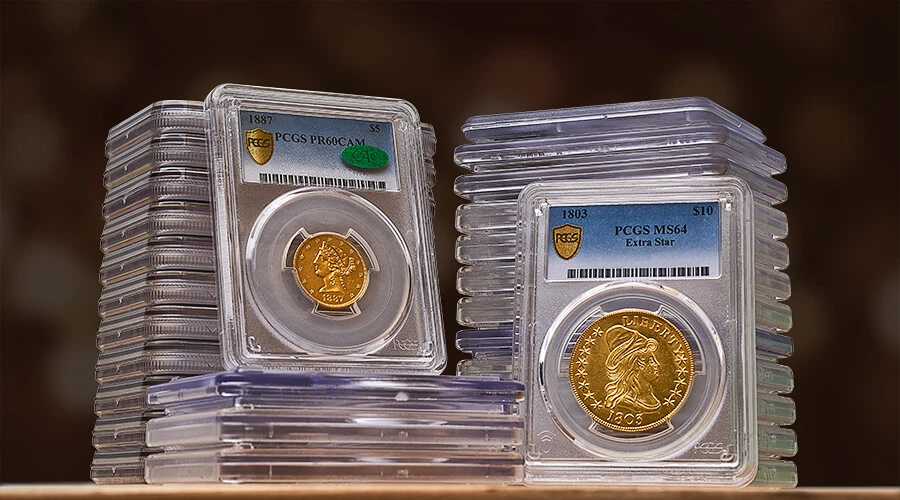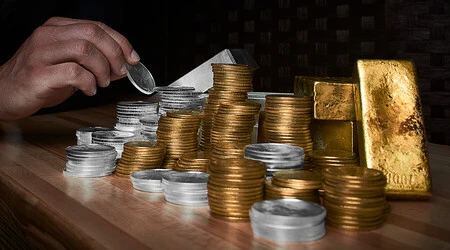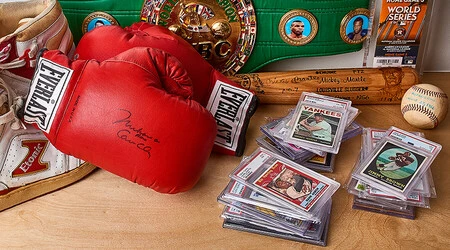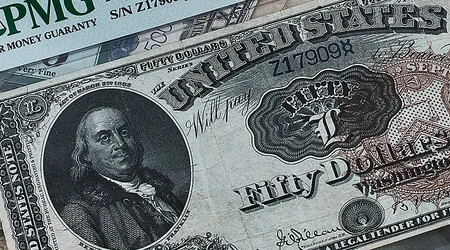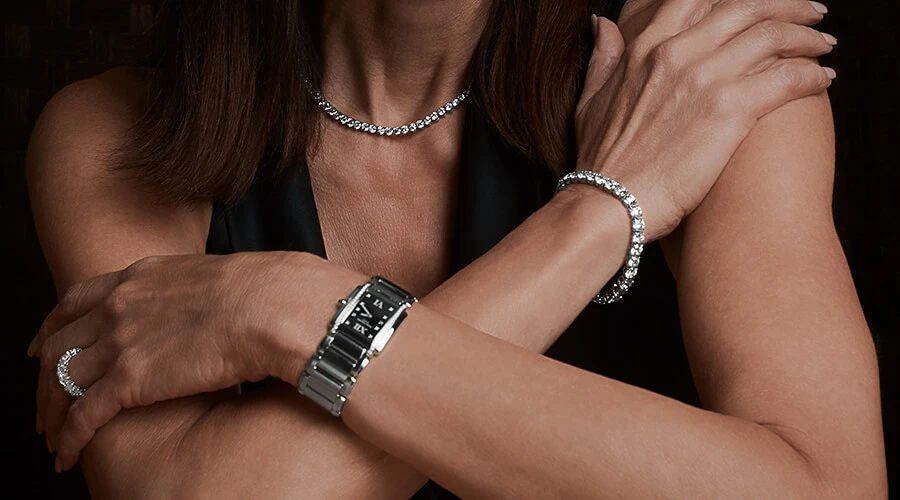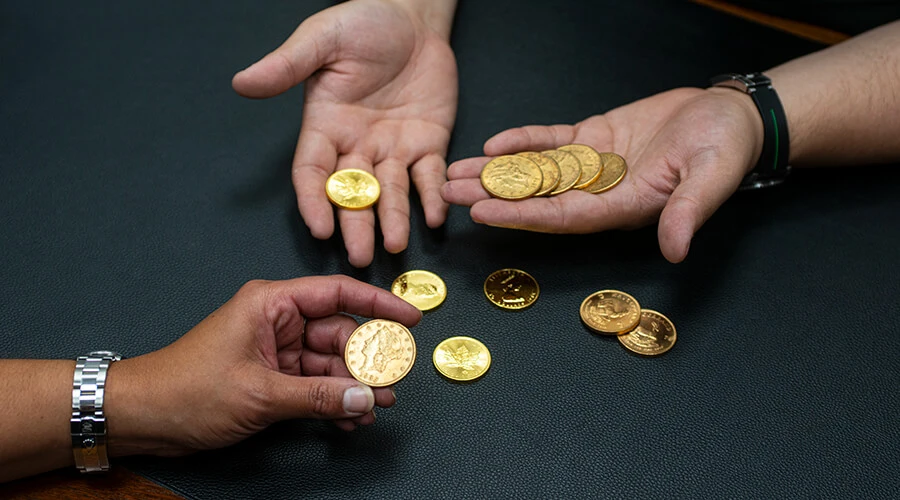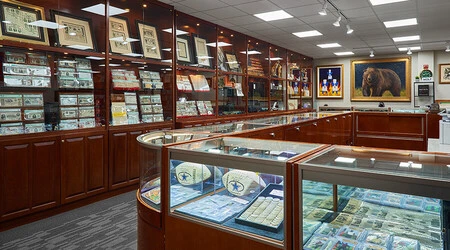When you think of the Wild West, you may picture gunslingers, cattle barons, riverboat gamblers, railroad tycoons, and dancehall queens. It was a time when money meant large, hefty silver dollars, not credit cards, and checkbooks that we carry today.
The Morgan Silver Dollar is one of the most iconic and collectible U.S. coins associated with the Wild West. Infamous outlaws like Jesse and Frank James as well as Butch Cassidy and the Sundance Kid often stole these oversized coins. It was said that sharpshooter Annie Oakley regularly shot holes through the Morgan silver dollar. It makes you start to wonder how many silver dollars Wyatt Earp threw across a saloon table while drinking and gambling. There is even a legend about Billy the Kid, who was carrying a brand new Morgan Silver Dollar in his pocket the night Pat Garrett shot him. Anyone who has a Morgan Silver Dollar in their collection may actually have a coin that passed through the hands of one of America’s most notorious Wild West outlaws! Heck, it’s said that Cowboys in the old west use to drop Morgan Silver Dollars in their canteens to preserve water on long trips.
So how did this now infamous coin come about?
While everyone has heard of California and Alaska’s gold rush, it was the silver strike in Nevada, the fabled Comstock Lode that brought American the "Coin of the Wild West." So much silver was flowing out of the strike that it clogged the market, prompting Congress to turn all that silver into coinage, the famed Morgan Silver Dollar to be exact before it overwhelmed the economy. The Morgan Silver dollar was minted from 1878 to 1904, and then again in 1921. It was the first standard silver dollar minted since production of the previous design, the Seated Liberty dollar, ceased due to the passage of the Coinage Act of 1873, which also ended the free coining of silver. The coin is named for its designer, United States Mint Assistant Engraver George T. Morgan.
It all started in 1876, Director of the Mint Henry Richard Linderman began efforts to redesign the nation’s silver coins. Linderman contacted the Deputy Master of the Royal Mint in London, requesting him to "find a first-class die-sinker who would be willing to take the position of Assistant Engraver at the Mint at Philadelphia. Morgan’s name came up and after looking at his work, Linderman offered him the post of "Special Engraver" for $8 per day. He was brought in to work at the Philadelphia Mint under Chief Engraver William Barber on a six-month trial basis. Upon his arrival at the U.S. Mint in Pennsylvania, Morgan was assigned the task of designing the Silver. At this time, the U.S. Mint struck no circulating Silver Dollars but realized it was only a matter of time before a Silver Dollar would be called for once again. They wanted to be ready.
The Design of the Morgan Silver Dollar
Morgan began the design that we all know today. The Obverse shows Lady Liberty portrayed as a goddess, wearing a Liberty Cap with the word "Liberty" inscribed on a ribbon. The cap is also adorned by two cotton blossoms and two heads of wheat, which are symbolic of America’s agricultural heritage. Thirteen stars represent the original 13 colonies. George T. Morgan’s small initial "M" is featured at the base of Liberty’s neck. The motto "E Pluribus Unum" and the date complete the design.
On the coin’s Reverse is a central design of an American eagle with outstretched wings. It holds an olive branch of peace and the arrows of war in its talons to indicate that although America is a peace-loving nation, she will defend her borders against attack. The motto "In God We Trust" in Gothic script appears above the eagle, while a laurel wreath surrounds the lower half of the design. The mint mark of coins struck at the branch mints appears below the bow in the wreath. Finally, with the help of a magnifying glass, it is possible to read Morgan’s tiny initial "M" on the left loop of the ribbon tying the wreath. The Morgan Silver Dollar is over 90% pure American silver and was authorized by the Bland-Allison Act of 1878. This act was passed to protect the American Treasury after the massive Comstock Lode silver strike 20 years earlier.
More about the coin's designer
George T. Morgan, the coin’s designer, worked at the U.S. Mint for 48 years. During this time, the United States went through many changes as the "Age of Technology" became a reality. This was also one of the most exciting and turbulent periods in United States history, and Morgan was witness to dramatic changes taking place all around him – from the winning of the Wild West to World War I, from the first Wright Brothers’ flight to Babe Ruth taking the baseball world by storm. Through it all, the one constant factor was the Morgan Silver Dollar, which even then was respected for its beauty and silver heft. In the early 1960s, a large quantity of unissued Morgan dollars was found to be available from Treasury vaults, including issues once thought rare. Individuals began purchasing large quantities of the pieces at face value, and eventually, the Treasury ceased exchanging silver certificates for silver coins.
Beginning in the 1970s, the Treasury conducted a sale of silver dollars minted at the Carson City Mint through the General Services Administration. In 2006, Morgan’s reverse design was used on a silver dollar issued to commemorate the old San Francisco Mint building. No one knows for sure how many historic Morgan Silver Dollars still remain today, but it is known beyond a doubt that they are one of the most popular and widely collected American coins in the world. It’s one of the few coins that is impressive in both size, design, and form. It’s been featured in many Hollywood westerns, used by outlaws Gamblers and historic figures like Buffalo Bill Cody, Saloons and towns have been named after it. So next time you are watching a western and they throw a silver coin on the bar, you can bet it’s probably a Morgan Silver Dollar.












